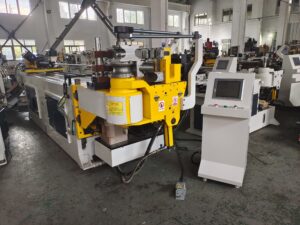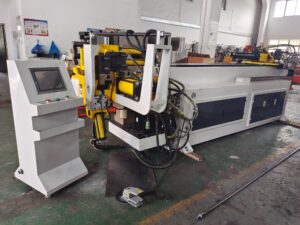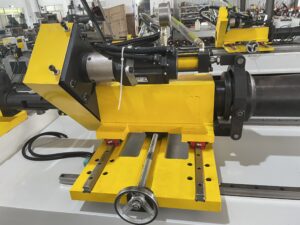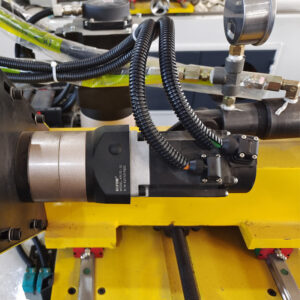Why Pipe Cutter Instead of Hacksaw? A Comprehensive Guide
The Superiority of Pipe Cutters Over Hacksaws for Precise and Efficient Cutting
When it comes to cutting pipes, one of the most common debates among professionals and DIYers is whether to use a pipe cutter instead of a hacksaw. While both tools have their place in metalworking and plumbing, pipe cutters offer distinct advantages that make them the preferred choice in many situations.
In this article, we will explore why a pipe cutter instead of a hacksaw is often the better option, covering aspects such as cutting precision, ease of use, efficiency, and material compatibility. We will also include a real-world case study demonstrating the benefits of using a pipe cutter in a professional plumbing project.

Why Choose a Pipe Cutter Instead of a Hacksaw?
1. Precision and Clean Cuts
One of the most significant advantages of using a pipe cutter instead of a hacksaw is the precision it offers. Hacksaws rely on manual sawing motions, which can result in uneven cuts, jagged edges, and inconsistencies in the cut diameter. This is especially problematic when working with pipes that require a snug fit, such as in plumbing or HVAC applications.
Pipe cutters, on the other hand, are designed to produce clean, burr-free cuts with consistent diameter sizes. This precision reduces the need for additional smoothing or deburring, saving both time and effort.
2. Ease of Use and Reduced Effort
Using a hacksaw for pipe cutting requires steady hand movements, consistent pressure, and multiple passes to achieve a clean cut. This process can be physically demanding, especially when working with larger pipes or in confined spaces.
A pipe cutter instead of a hacksaw offers a more ergonomic solution. Most pipe cutters feature a rotating cutting wheel or chain mechanism that requires less manual effort. The user simply tightens the cutter around the pipe and rotates it, allowing for a smoother and more controlled cutting experience.
3. Time Efficiency and Faster Cutting
Time is an important factor in any project, whether you are a professional plumber, HVAC technician, or DIY enthusiast. A pipe cutter instead of a hacksaw significantly reduces cutting time.
- Hacksaws require multiple strokes and adjustments, slowing down the process.
- Pipe cutters can make quick, continuous cuts with minimal effort, especially when cutting large-diameter pipes.
For large-scale projects, the time saved using a pipe cutter can be substantial, improving productivity and efficiency.
4. Material Compatibility and Versatility
While hacksaws can cut through various materials, including metal, plastic, and wood, they are not always the best choice for every material. Pipe cutters, however, are designed to work efficiently with different types of pipes, such as:
- Copper pipes – Hacksaws can leave rough edges on copper pipes, while pipe cutters provide a clean, precise cut, reducing the risk of leaks in plumbing systems.
- PVC and CPVC pipes – Pipe cutters can easily slice through plastic pipes without splintering or cracking, unlike hacksaws, which may cause irregular cuts.
- Steel and stainless steel pipes – Pipe cutters equipped with hardened cutting wheels can handle tough metals, whereas hacksaws require frequent blade replacements and more effort.
5. Reduced Risk of Pipe Deformation
When using a hacksaw instead of a pipe cutter, there is a higher risk of applying uneven pressure, which can cause the pipe to deform, dent, or become oval-shaped. This is particularly problematic for thin-walled pipes or those used in high-pressure applications.
A pipe cutter instead of a hacksaw applies even pressure around the circumference of the pipe, ensuring a uniform cut without compromising the pipe’s structural integrity.
6. Less Noise and Dust Production
In environments where noise and dust are concerns, such as residential plumbing or renovation projects, a pipe cutter instead of a hacksaw offers a quieter and cleaner cutting experience.
- Hacksaws produce loud, grinding noises and create metal or plastic dust, which can be hazardous if inhaled.
- Pipe cutters operate quietly and produce minimal debris, making them a safer and more user-friendly option.
7. Durability and Longevity of the Tool
While hacksaws require frequent blade replacements, pipe cutters are built to last. High-quality pipe cutters made from durable materials such as hardened steel and tungsten carbide can withstand years of regular use without significant wear and tear.
This longevity makes pipe cutters instead of hacksaws a more cost-effective investment for professionals and frequent users.
Case Study: Professional Plumber’s Experience with Pipe Cutters
To illustrate the pipe cutter instead of hacksaw debate in a real-world scenario, let’s consider the experience of Jake, a professional plumber with over 15 years of experience.
The Challenge
Jake was hired to renovate the plumbing system of an old apartment building. The project required cutting hundreds of copper and PVC pipes of various diameters, often in tight spaces. Initially, Jake used his traditional hacksaw, but he quickly realized the inefficiencies of this method.
- Time-consuming cuts – Each cut took several minutes, slowing down the overall project timeline.
- Inconsistent cuts – Some cuts were slightly oval-shaped, requiring additional adjustments.
- Physical strain – Hours of sawing led to fatigue, reducing his productivity.
The Solution: Switching to a Pipe Cutter
Frustrated with the limitations of the hacksaw, Jake decided to switch to a pipe cutter instead of a hacksaw. He used:
- A standard pipe cutter for copper pipes
- A plastic pipe cutter for PVC and CPVC pipes
- A ratchet-style pipe cutter for thicker steel pipes
The Results
- Faster cutting times – Jake was able to cut each pipe in seconds rather than minutes.
- Cleaner cuts – The fittings fit perfectly, reducing the need for adjustments and leak checks.
- Less physical strain – The ergonomic design of the pipe cutter reduced fatigue, allowing him to work longer without discomfort.
By making the switch, Jake completed the project two days ahead of schedule, impressing his client and increasing his efficiency on future jobs.
When Is a Hacksaw a Better Choice?
While pipe cutters instead of hacksaws are often the better option, there are some cases where a hacksaw may still be useful:
- Irregular or curved cuts – If you need to cut a pipe at an angle or in a non-circular shape, a hacksaw offers more flexibility.
- Thick-walled metal pipes – Some extremely thick pipes may require a power saw or angle grinder rather than a standard pipe cutter.
- Limited availability of a pipe cutter – In emergency situations, a hacksaw may be the only tool available.
However, for most standard pipe-cutting tasks, a pipe cutter instead of a hacksaw is the smarter, more efficient choice.



